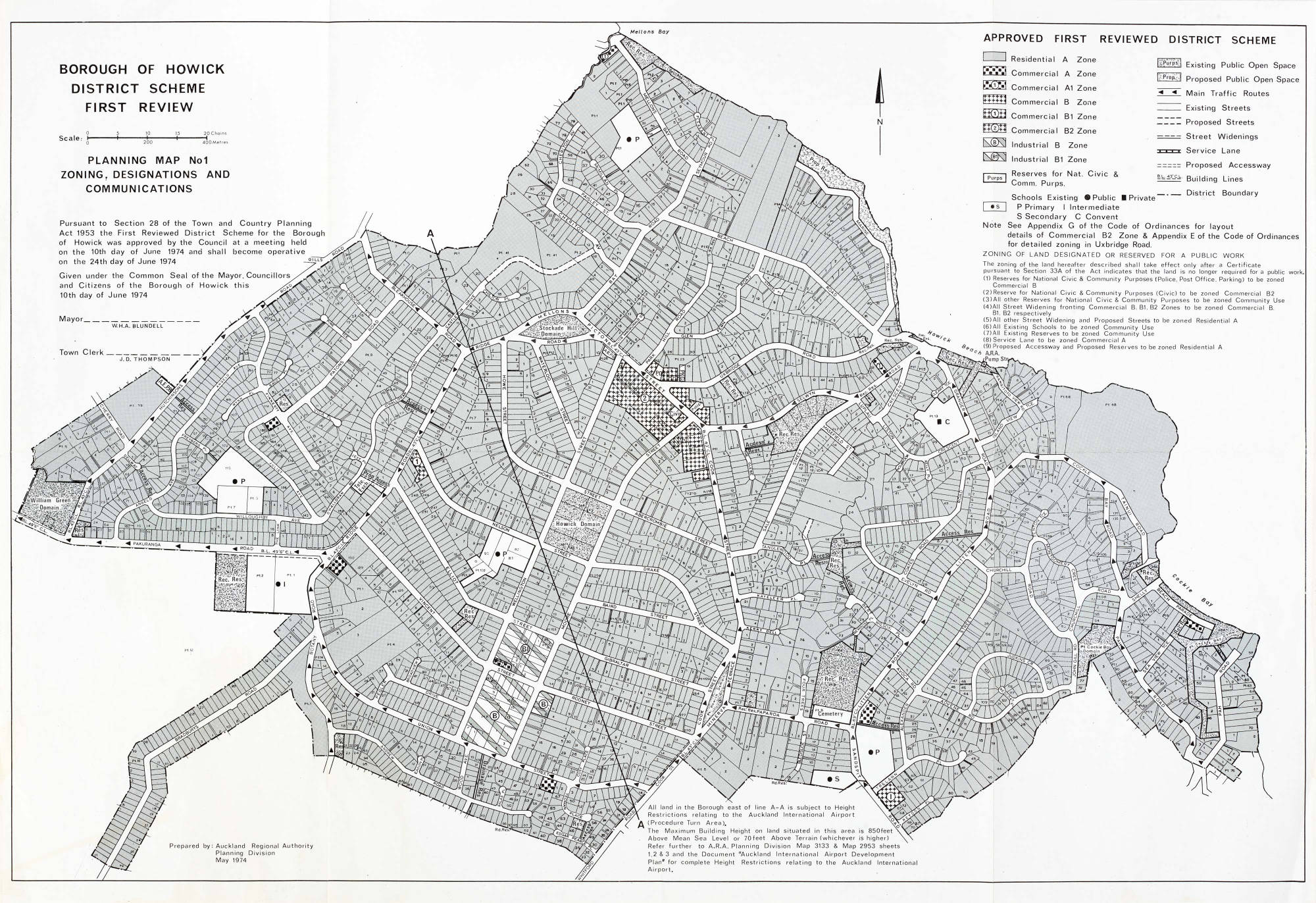Business land gives us the business
Wed, May 24, 2023 | Housing
[Image credit: Borough of Howick, approved first reviewed district scheme, 1974. Record created from digital image and catalogue records. Auckland Libraries Heritage Collections Map 9307]
Give someone the business
American English
Informal
'to make difficulties for someone'
In 2020, Government released The National Policy Statement for Urban Development (NPS-UD) which sets out the objectives and policies for planning well-functioning urban environments. As part of the NPS-UD, each of the five Tier 1 urban areas and eight Tier 2 urban areas must prepare a Housing and Business Capacity Assessment (HBA). These HBAs, among other things, measure how well the demand for housing and business land is being met by the supply of land and infrastructure.
Most times, the housing side of this analysis is what gets all the attention. This makes sense. It's no secret that in New Zealand, the price of housing is quite high. And housing is an issue that impacts every single person. So, we end up with headlines upon headlines in the news where we hear everyone’s reckons on how to solve the issue of housing in New Zealand.
However, we also need to make sure that we’re adequately considering the business-side of the equation. The issue with this? Forecasting business land use? It’s hard! At least compared to housing.
Housing is relatively straightforward. Every household needs a house. Every house needs bedrooms, a kitchen, a toilet, etc. The shape and size of houses differs – but honestly, not that much.
But businesses? That’s a whole other issue. Think of how varied businesses are compared to houses. Even within a specific sector. For instance, there are stores that are not much more than a few rows of shelves in a space the size of an average bedroom all the way up to stores like a Costco or a Mitre10 Mega.
And the nature of business changes much more than for housing. Go into a house built 100 years ago and you know you’re in a house. But with business, that might not be the case. There are retail shops now that have no physical location and do all their business online. Do they need land zoned for retail? Do they need parking? Do they need to be near where their customers are? How will retail business look in ten years? Or fifty?
This is just one example, but hopefully illustrates what can make forecasting the demand for business land so difficult. But it’s also important that we do a good job.
Forecasting business land demand is important because it allows planners, developers, and investors to make informed decisions about the allocation and use of land. By predicting future land-use patterns, it's possible to optimize the use of available land and infrastructure, provide the necessary services and amenities, and support economic growth.
It doesn’t get the same airtime as housing, but making sure that there is enough land zoned for business purposes both now and in the future (and making sure that it’s in the right places) is a crucial part of ensuring well-functioning urban environments in New Zealand. If we don’t get this right, we might not have enough land for businesses to develop or grow. Businesses are essential to the wellbeing of an area. We need businesses around to provide jobs and goods and services to all those people who live in the housing we spend all our time thinking about.
What do you think about this? Does business land get enough thought? How will business land use change in the future? Principal Economist, Shane Martin, spends a lot of time thinking about this and he's keen to hear from practitioners that work in this space. Drop him a line at smartin@mrcagney.com